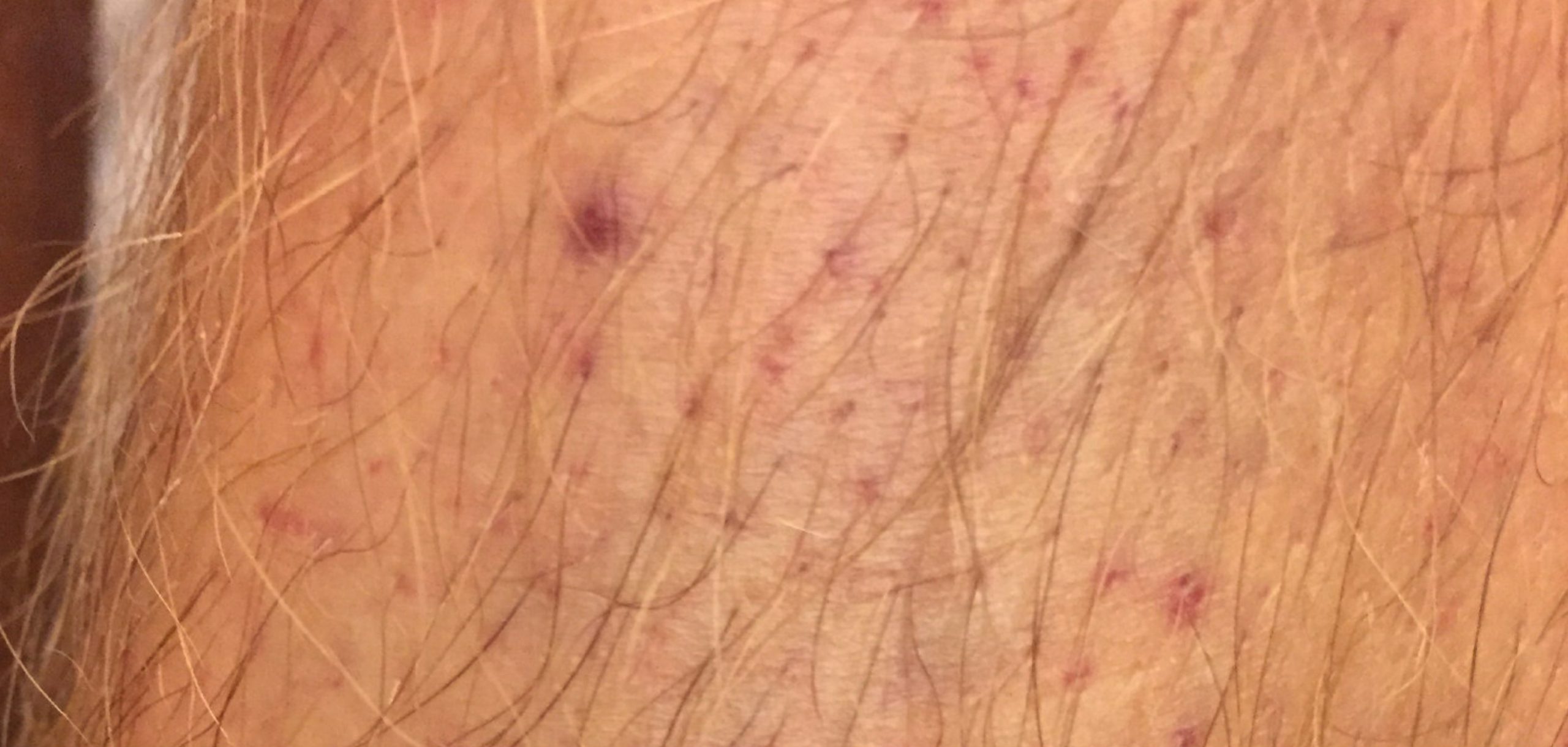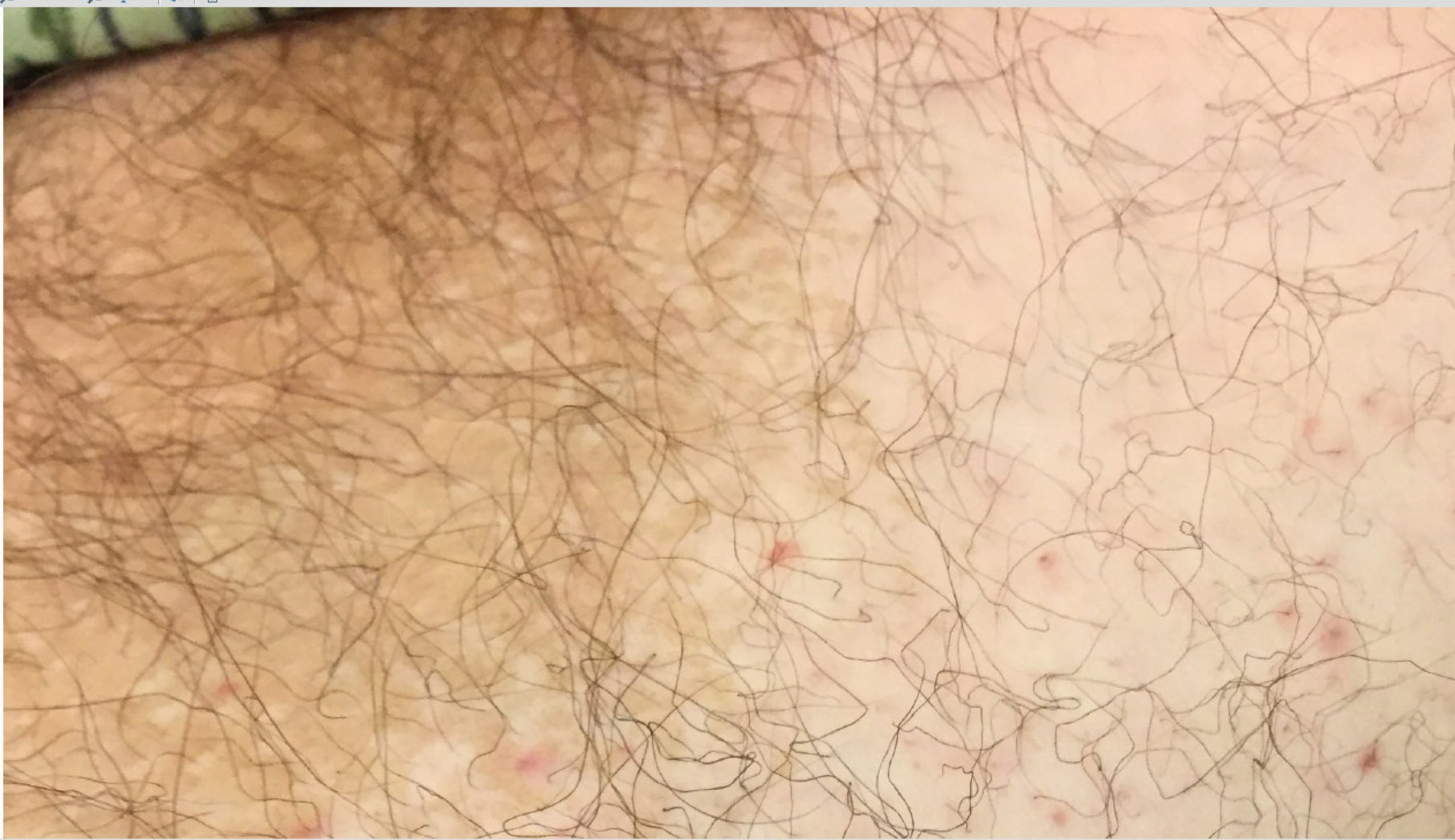Case Presentation: A 24-year-old man with no significant past medical history presented with a petechial perifollicular rash, polyarthralgia of his large joints (hips, spine, knees), 20-pound weight loss, myalgia, and fatigue, all of two months duration. For prior six months, the patient had been homeless, living in his car which he scrupulously cleaned with Lysol twice a day, and he had only eaten water, bread, protein bars, and Nature’s Harvest nut bars. Nutritional supplementation was initiated on admission including vitamin supplementation and protein shakes. Due to his systemic symptoms the patient underwent a broad rheumatologic workup and infectious workup including blood cultures for HIV, RF, ANA, dsDNA, SSA, SSB, anti-Smith antibodies, ANCA, MPO/p3, c3, c4, cryoglobulins, GC/CT NAAT, cocci, parvo, EBV, and anti-RNP. All the aforementioned studies were found to be negative.On the second day of the admission, dermatology was consulted for biopsy of the patient’s perifollicular rash, which the patient refused. Subsequent exams showed corkscrew hairs and bruising from tourniquet placement for blood draws. Given concern for possible scurvy, a vitamin C level was checked.Fatigue and arthralgia improved, and the patient was discharged on day 3. The patient was given a multivitamin and 1000 mg daily vitamin C. The patient’s vitamin C level from day 2 of admission later resulted at < 5 µmol/L (normal is 23-114 µmol/L) confirming a diagnosis of scurvy. The patient declined in person followed up, but in a telephone follow-up with the transitional nurse, he reported continued improvement in arthralgia, rash, and fatigue.
Discussion: Scurvy is rare in the United States and occurs predominately in patient with one or more of the risk factors of extremely malnourishment, drug and alcohol abuse, mental illness, and consumption of diet without fruits and vegetables. Signs and symptoms include perifollicular hemorrhage with petechiae, coiled hairs, ecchymoses, gingivitis, arthralgia, anemia, impaired wound healing, and edema. Vitamin C is required for collagen synthesis, fatty acid transport, neurotransmitter synthesis, prostaglandin metabolism, and nitric oxide synthesis. Diagnosis can be confirmed with vitamin C levels, and though not necessary for diagnosis, a skin biopsy would show dilated hair follicles, keratin plugging, and non-inflammatory perifollicular and dermal hemorrhage. Treatment consists of vitamin C supplementation which results in resolution of symptoms with a few weeks.
Conclusions: It is important for hospitalists to keep scurvy on the differential for patients from vulnerable populations that are admitted to the hospital with systemic vasculitis-like presentations, as scurvy is uniformly fatal if left untreated and is easily reversed with vitamin C supplementation.


